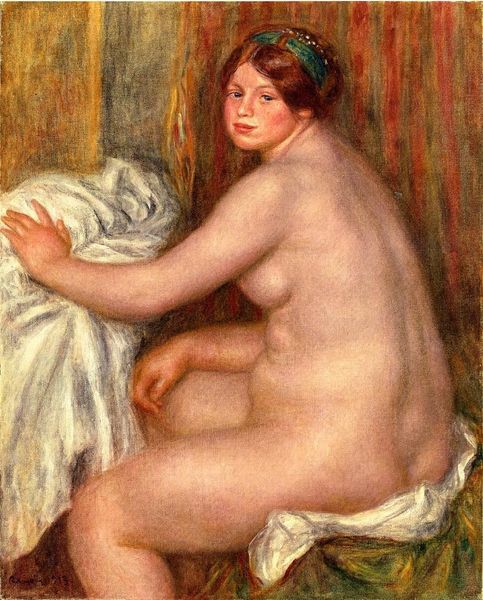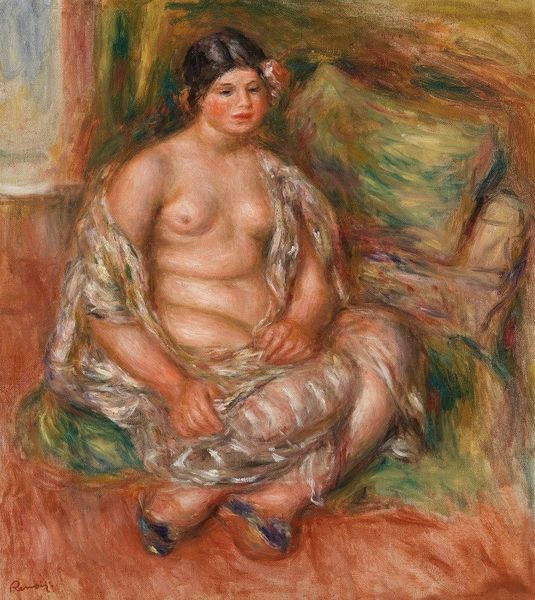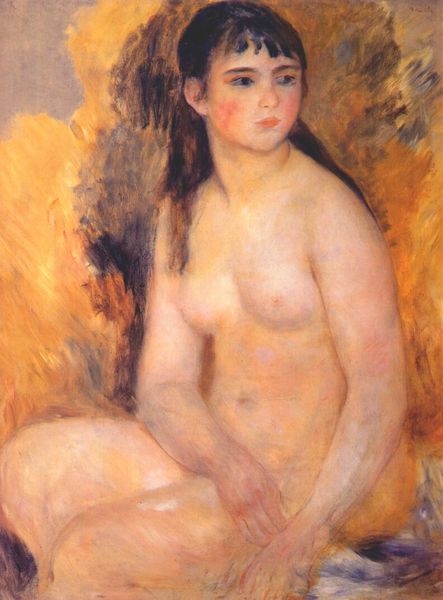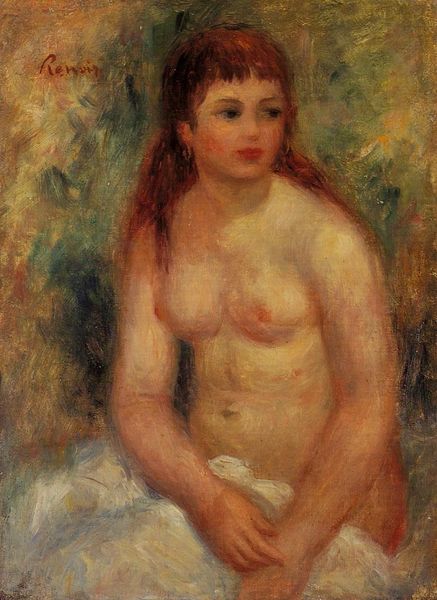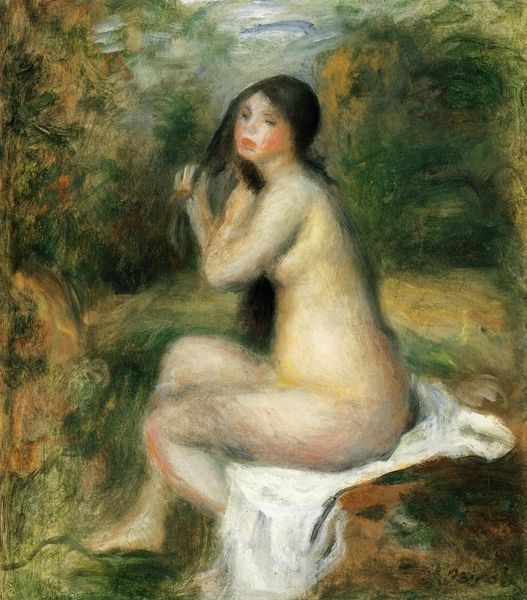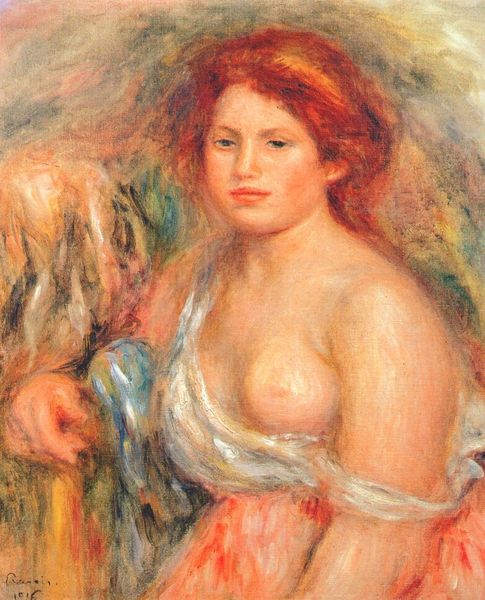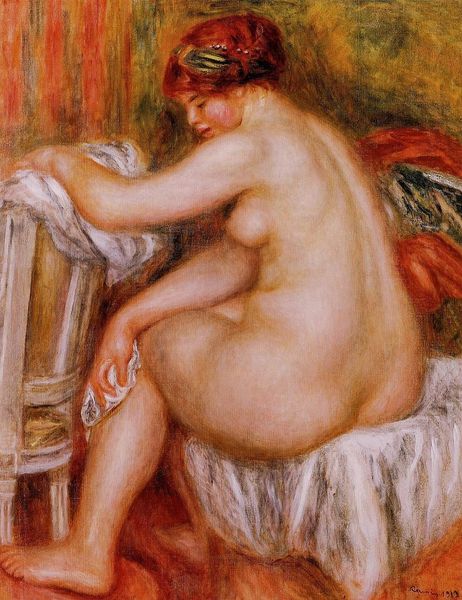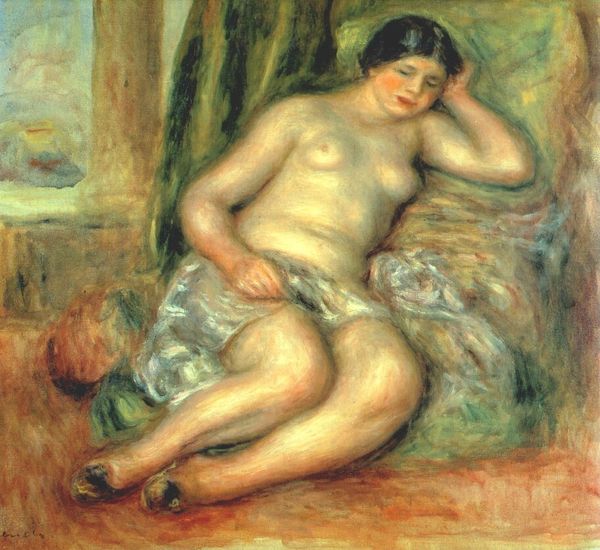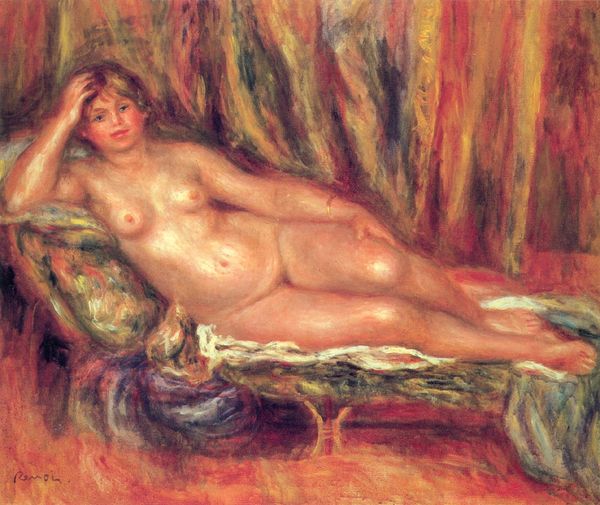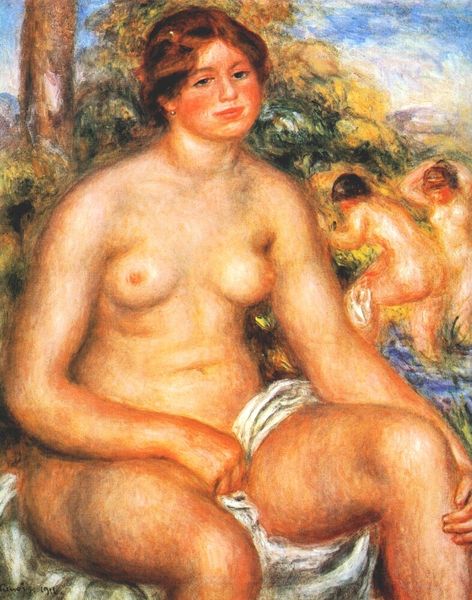
Copyright: Public domain
Pierre-Auguste Renoir’s painting depicts a nude woman, set against a backdrop of green cushions. The motif of the reclining nude has ancient roots, echoing the classical Venuses and nymphs of antiquity. Consider the "Venus Pudica," or modest Venus, a widespread pose since the Roman times where the figure covers her nakedness; in Renoir's painting, however, the woman's pose, while not overtly provocative, lacks the self-consciousness of the "Venus Pudica." Instead, she embodies a sense of ease and unashamed comfort. Throughout the ages, artists have grappled with portraying the female form, from the idealized goddesses of the Renaissance to the more intimate, humanistic nudes of the Impressionist era. The memory of these images, both collective and individual, shapes our perception and emotional response. We can sense Renoir is inviting us into a space of contemplation and quiet sensuality, appealing to primal emotions. In that way, the nude woman motif continues its cyclical journey, resurfacing, evolving, and inviting new interpretations across the ages.
Comments
No comments
Be the first to comment and join the conversation on the ultimate creative platform.

